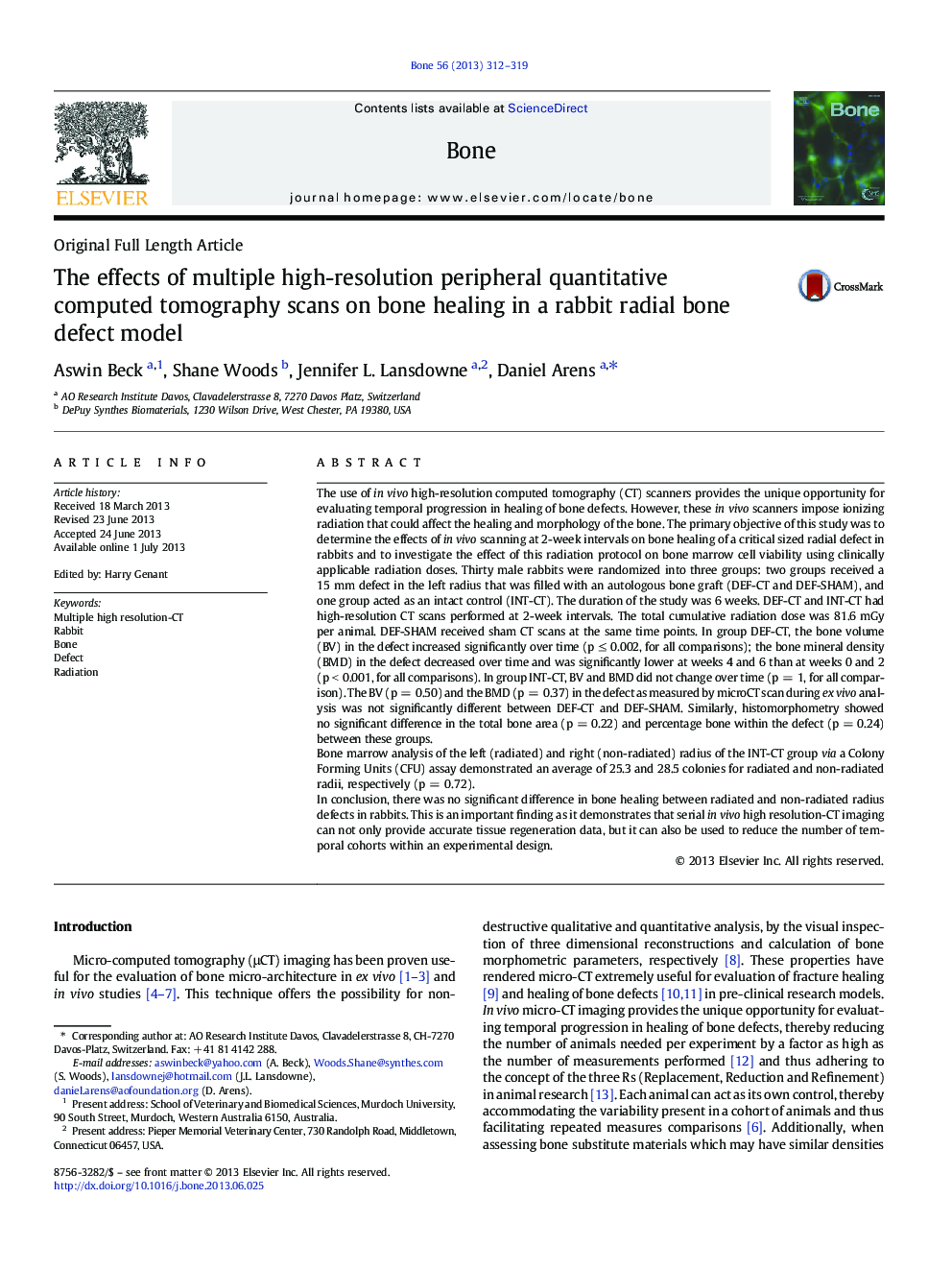| کد مقاله | کد نشریه | سال انتشار | مقاله انگلیسی | نسخه تمام متن |
|---|---|---|---|---|
| 5890956 | 1153262 | 2013 | 8 صفحه PDF | دانلود رایگان |
- We investigated the effect of 4 serial quantitative peripheral CT scans on bone healing in a radius defect in rabbits.
- Bone healing progressed normally to an immature bone stage without significant difference between exposed and non-exposed legs after 6Â weeks.
- There was no significant difference in bone marrow cell viability between exposed and non-exposed legs.
The use of in vivo high-resolution computed tomography (CT) scanners provides the unique opportunity for evaluating temporal progression in healing of bone defects. However, these in vivo scanners impose ionizing radiation that could affect the healing and morphology of the bone. The primary objective of this study was to determine the effects of in vivo scanning at 2-week intervals on bone healing of a critical sized radial defect in rabbits and to investigate the effect of this radiation protocol on bone marrow cell viability using clinically applicable radiation doses. Thirty male rabbits were randomized into three groups: two groups received a 15 mm defect in the left radius that was filled with an autologous bone graft (DEF-CT and DEF-SHAM), and one group acted as an intact control (INT-CT). The duration of the study was 6 weeks. DEF-CT and INT-CT had high-resolution CT scans performed at 2-week intervals. The total cumulative radiation dose was 81.6 mGy per animal. DEF-SHAM received sham CT scans at the same time points. In group DEF-CT, the bone volume (BV) in the defect increased significantly over time (p â¤Â 0.002, for all comparisons); the bone mineral density (BMD) in the defect decreased over time and was significantly lower at weeks 4 and 6 than at weeks 0 and 2 (p < 0.001, for all comparisons). In group INT-CT, BV and BMD did not change over time (p = 1, for all comparison). The BV (p = 0.50) and the BMD (p = 0.37) in the defect as measured by microCT scan during ex vivo analysis was not significantly different between DEF-CT and DEF-SHAM. Similarly, histomorphometry showed no significant difference in the total bone area (p = 0.22) and percentage bone within the defect (p = 0.24) between these groups.Bone marrow analysis of the left (radiated) and right (non-radiated) radius of the INT-CT group via a Colony Forming Units (CFU) assay demonstrated an average of 25.3 and 28.5 colonies for radiated and non-radiated radii, respectively (p = 0.72).In conclusion, there was no significant difference in bone healing between radiated and non-radiated radius defects in rabbits. This is an important finding as it demonstrates that serial in vivo high resolution-CT imaging can not only provide accurate tissue regeneration data, but it can also be used to reduce the number of temporal cohorts within an experimental design.
Journal: Bone - Volume 56, Issue 2, October 2013, Pages 312-319
